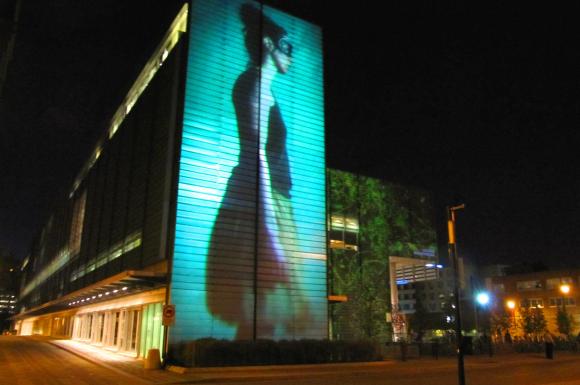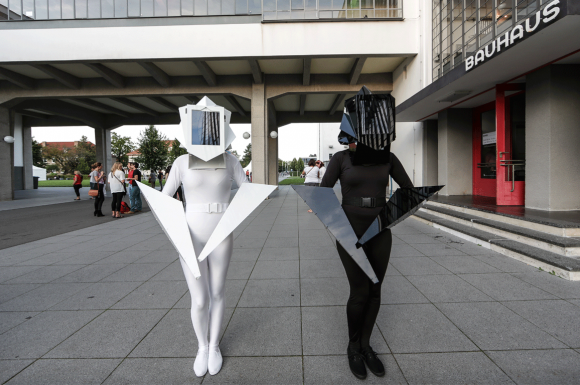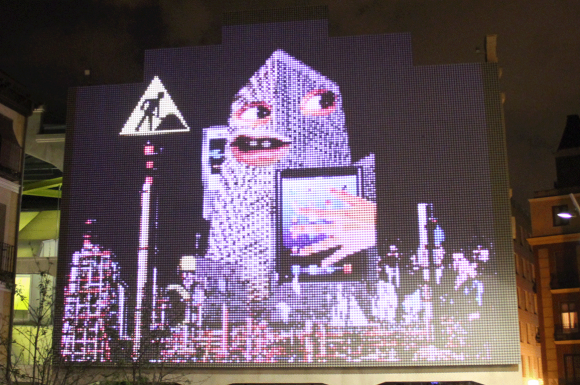About Connecting Cities
- Kuala Lumpur
- Schengen
- Shenzen
- Sydney
- Utrecht
- Venice
- Sapporo
- Sao Paulo
- Quanzhou
- Riga
- Ruhr
- Saarbrücken
- Vienna
- Wuhan
- York
- Zagreb
- Zaragoza
- Pula
- New York
- Dortmund
- Frankfurt
- Guangzhou
- Helsinki
- Dessau
- Brussels
- Bangkok
- Beijing
- Berlin
- Bogotá
- Hong Kong
- Istanbul
- Marseille
- Melbourne
- Montreal
- Moscow
- Madrid
- London
- Jena
- Linz
- Liverpool
- Aarhus
Connecting Cities is a European and worldwide expanding network aiming to build up a connected infrastructure of media facades, urban screens and projection sites to circulate artistic and social content. In opposition to the commercial use of these urban media, we establish them as platforms on which citizens can exchange – within the city as much as between cities.
For the coming years the Connecting Cities Network pursues an artistic research programme that combines workshops and conferences with the production of interactive artworks which are presented every year during the Connecting Cities Events.
The initiator of the project is Public Art Lab (Berlin) in cooperation with Ars Electronica Futurelab Linz, BIS (Body Process Arts Association) Istanbul, FACT Liverpool, iMAL Brussels, m-cult Helsinki, Medialab Prado Madrid, Media Architecture Institute Vienna, Museum of Contemporary Art Zagreb, Riga 2014 and Videospread Marseille.
Other partners include Aarhus University, Marseille-Provence 2013, MUTEK Montreal Quartier des spectacles Montreal, Foundation Bauhaus Dessau, Verve Cultural Sao Paulo, Federation Square Melbourne, Media Arts Lab Sapporo, xm:lab Saarbrücken, The Concourse Sydney, ETOPIA Zaragoza, 403 International Art Center Wuhan, Screens in the Wild London, Streaming Museum New York and Illuminating York
Streaming Partner: Streampark TV
Media Partner: ARTE Creative
With support of the Culture Programme 2007-2013 of the European Union.
Photograph:
Vent d'esprit by Herman Kolgen, Parcours Numérique Montreal 2012
Connecting Monsters by h.o during the Connecting Cities Events in Linz 2013 © Ars Electronica
Master/Slave Invigilator System by Jeremy Bailey during the connecting Cites Event at Bauhaus Dessau 2013 © Ruthe Zuntz
Robin Hood by Robin Hood Minor Asset Management © Medialab-Prado
Video:
Editing by Xar Lee
In the years to come we will approach our vision of Connecting Cities through three scenarios:
NETWORKED CITY 2013
Cities can be connected trans-locally through urban media facades, which provide space for intercultural encounters and exchange.
MORE
PARTICIPATORY CITY 2014
Interactive technologies enable citizens to participate directly in artistic urban media projects. Thus they can play an active role in their urban environment instead of being passive consumers.
MORE
VISIBLE CITY 2015
Societal flows and processes become analysed and visualised on urban media facades through using data which is generated by digital sensor networks and infrastructures that underlie our daily lives.
MORE
The project period was complemented by the Connecting Cities publication 'What Urban Media Art Can Do - Why When Where & How'. The book engages leading thinkers, artists, curators, architects and designers in an exploration of the aesthetic, theoretical, technological and practical conditions of what urban media art can do. The publication considers artistic responses to current urban threats and discourses in a time characterised by specific technological literacies and constructions of meaning, contextualised within theoretical perspectives.
In this framework, the Connecting Cities curators co-edited a curatorial statement: The key framing insight is that the issue of co-curation has become central. This is not just because Connecting Cities is an international network, but also because co-curation is inherent to the translocality of urban media artworks. Co-curation emerges as a practice because artworks relocate to diferent cultural contexts or connect such social spaces together in real-time through the integration of the physical and the digital.
Read the full curatorial statement here and order the book with av edition or Amazon.




